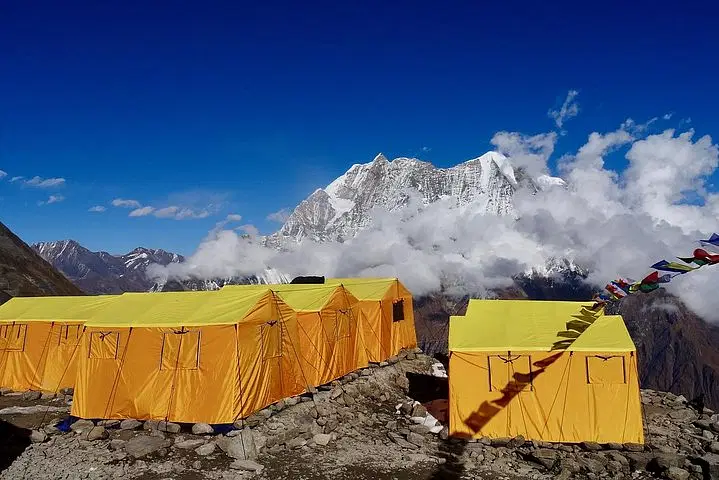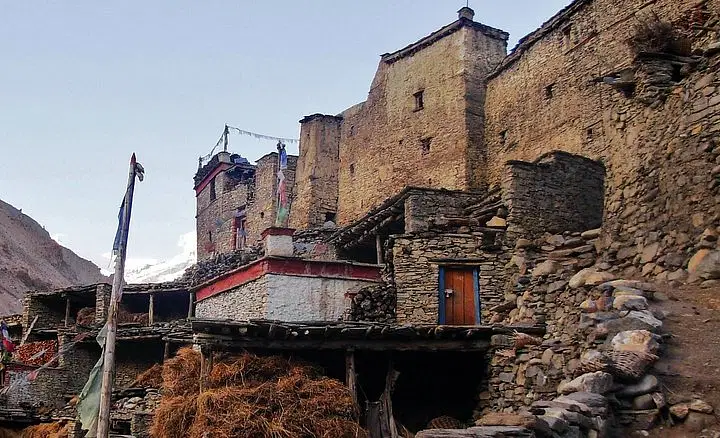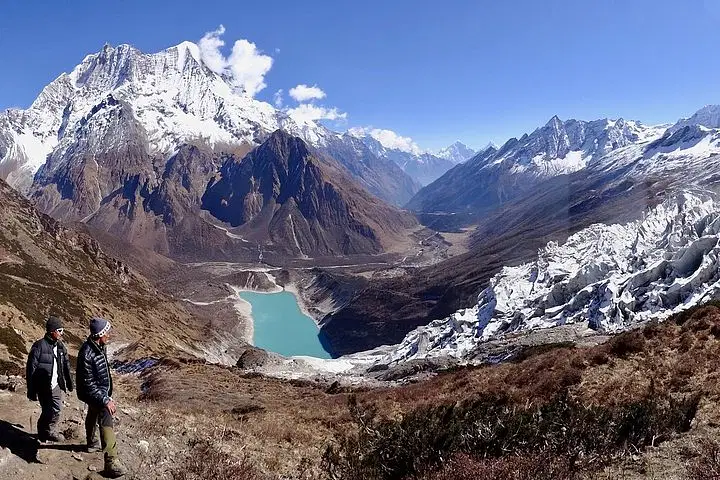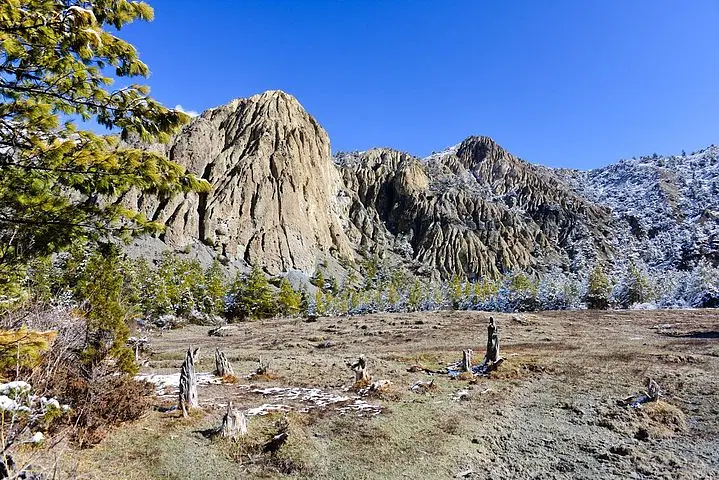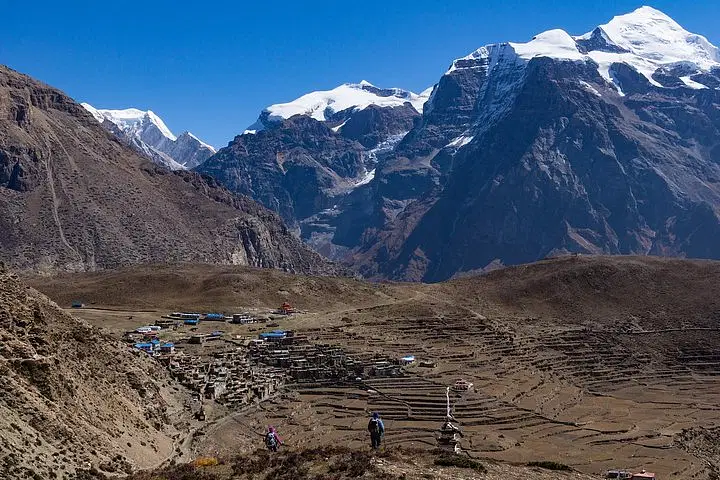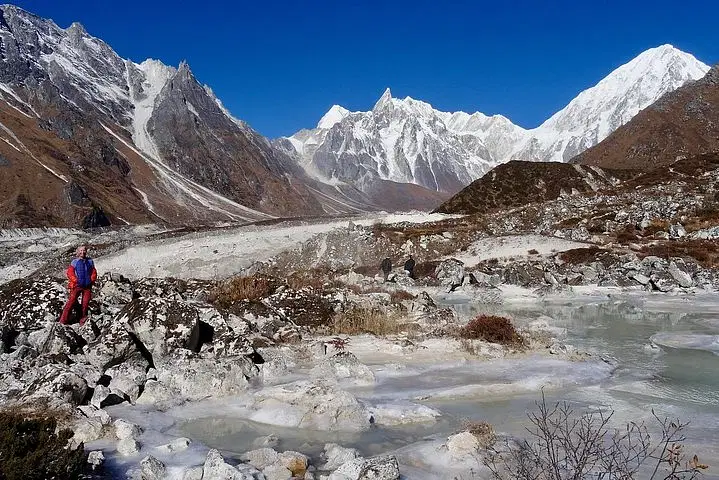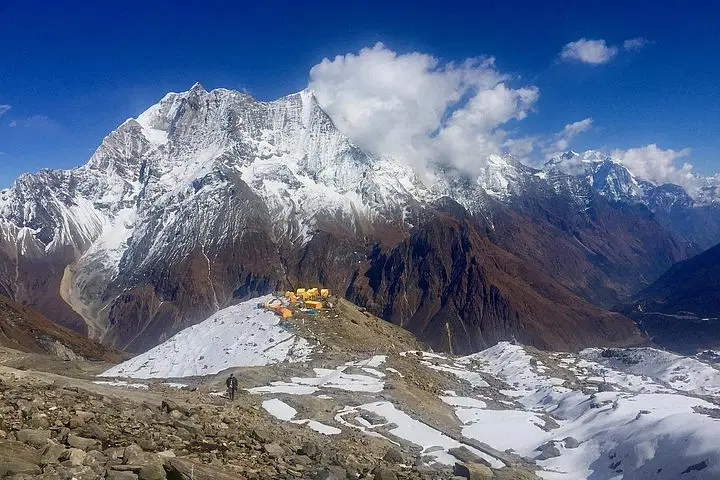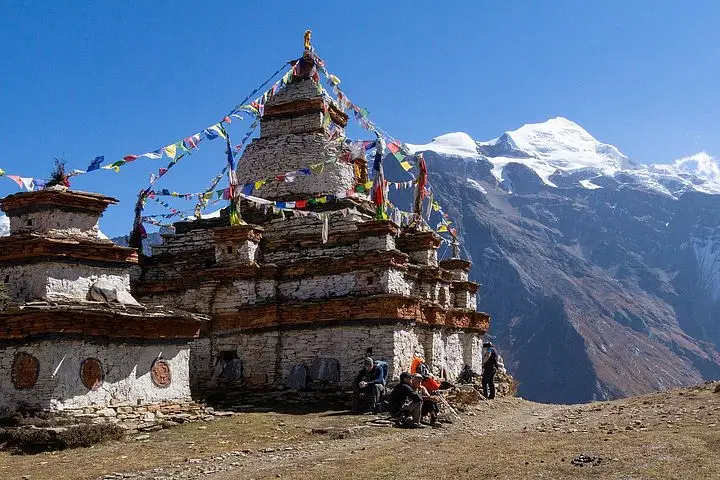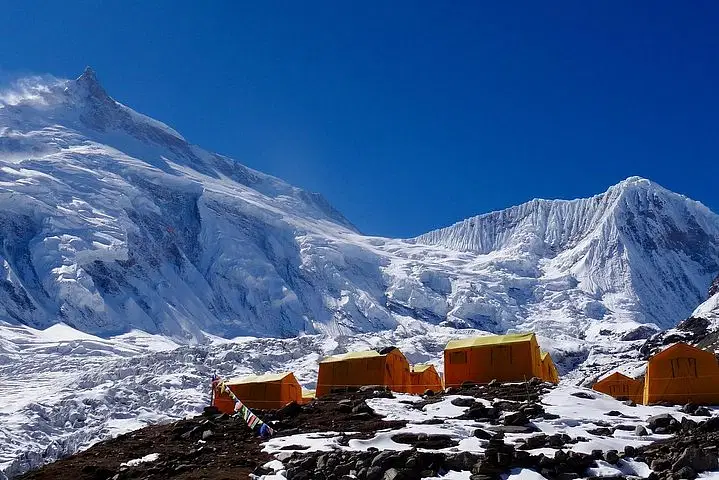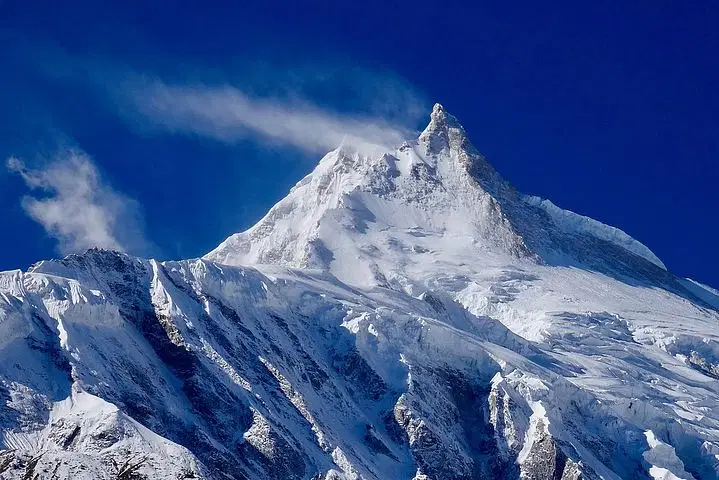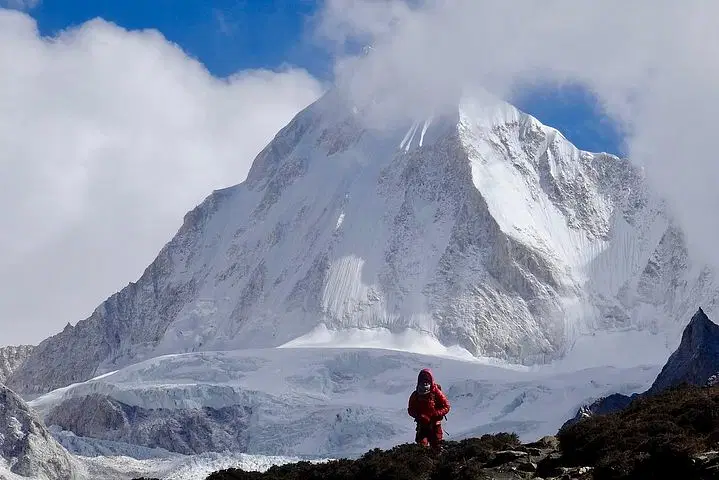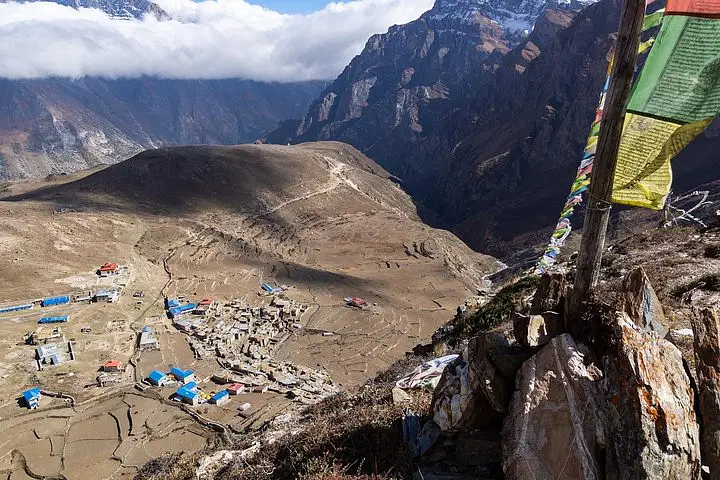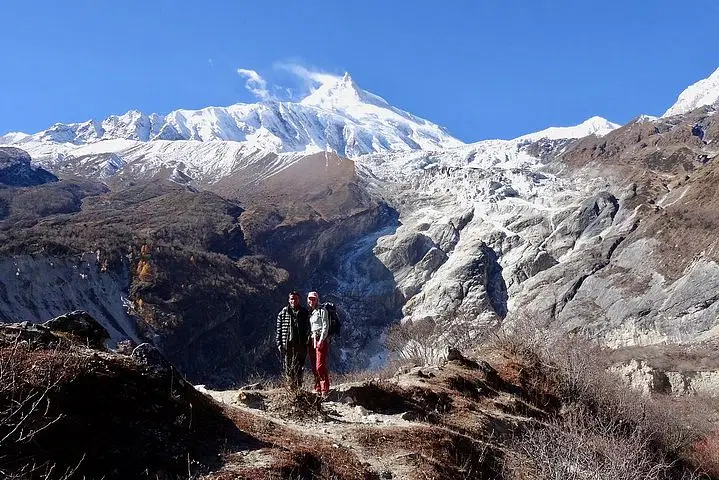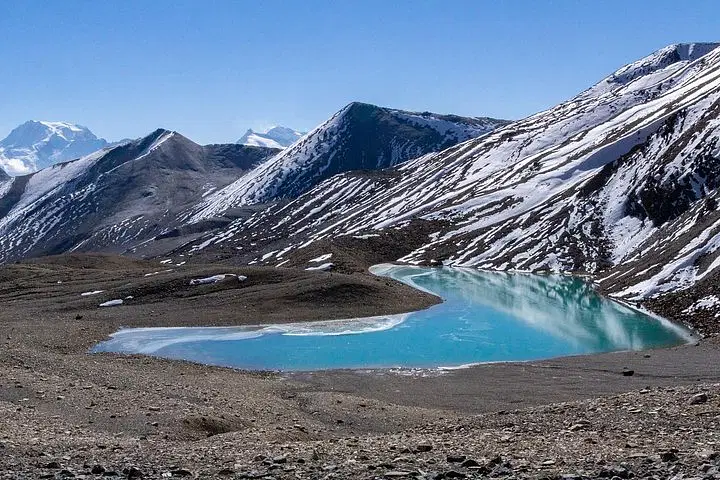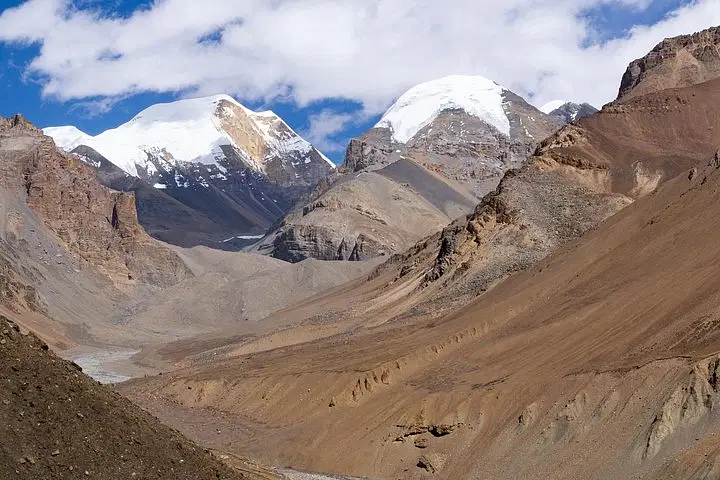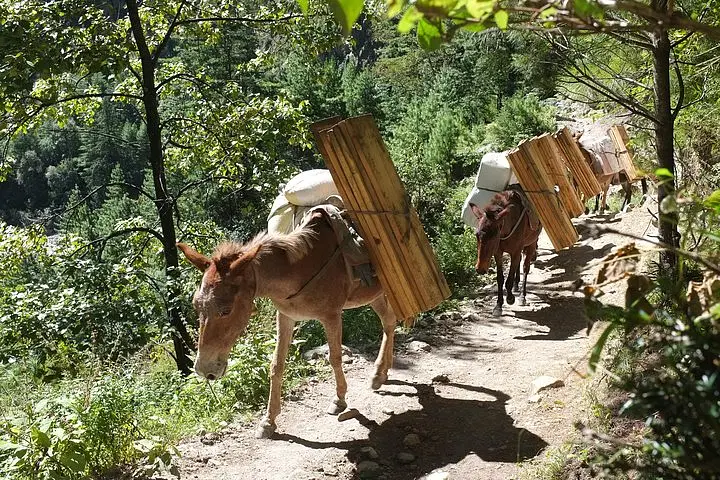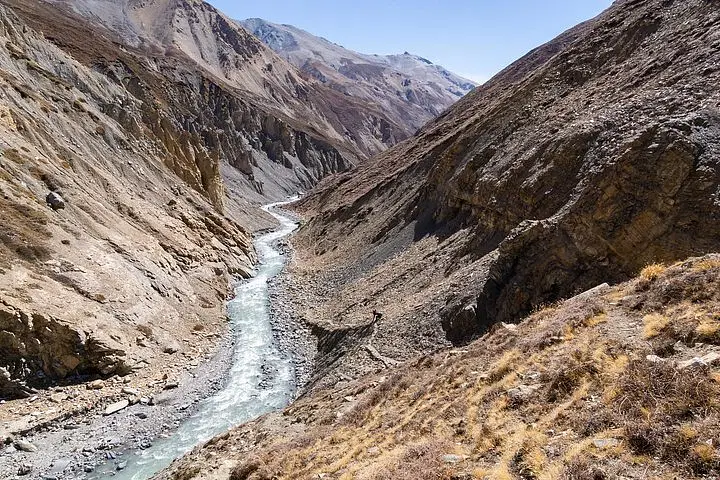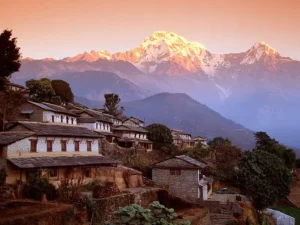24 Days
16-70
Moderate
Nar Phu Valley & Annapurna
Trekking
4580
Kathmandu
Kathmandu
The recently opened, breathtaking Nar and Phu valleys are home to ethnically Tibetan people. Remote villages, winding canyons, beautiful forests, breathtaking rock formations, yaks, gompas, and distinctive Himalayan cultures are all part of this trek. The bridge that crosses the Marshyangdi River to reach the steep portals of the Nar Phu valley system is easily overlooked when trekking the standard Annapurna circuit. Despite the narrow and forested entrance, the valley system above opens up to a vast expanse of high snow-peaks, ancient villages, and high-altitude grazing settlements.
Few Westerners have visited these essentially unexplored villages or scaled the numerous 7000-meter peaks that surround it, as it was closed to trekkers until late 2002. We will travel to this isolated area of upper Manang and remain at the winter settlement.
Itinerary
On arrival at Kathmandu Tribhuvan International Airport, you will be received by our staff and escorted to the Hotel, where one of our staff will give you a brief orientation of the Hotel, Kathmandu, Trekking, dos and don’ts, and other related information that you might require while in Nepal.
After your first night in Kathmandu, you will be well informed on arrival about the time for your half day guided sightseeing tour in Kathmandu at places of interest. Sometime, depending upon your flight arrival if it’s late in the night we will do this tour in the afternoon instead of morning to give you a good rest before you go on our interesting tour. Pashupatinath (World Heritage Site): Pashupatinath Temple is one of the most significant Hindu temples of Lord Shiva in the world, located on the banks of the Bagmati River. Though you are not allowed to go inside the temple as it is strictly for Hindus only, you can clearly see the temple and the activities from the eastern bank of the Bagmati River. It is a square two-tiered pagoda temple built on a single-tier plinth which is famous all over the world.
Swoyambhunath Stupa – The Monkey Temple
Watches over the valley from the top of a hillock on its western side. The huge stupa is one of the holiest Buddhist sites in Nepal and its establishment is linked to the creation of the Kathmandu Valley out of a primordial lake. Swoyambhu is also known as Samhengu and the Monkey temple because of the countless monkeys living in the premises.
Patan City
Patan is an old Newar city where we will see the historic Durbar Square, the Golden Gate, the sky piercing temple of Taleju and the statue of Yogendra Malla, Krishna Mandir, Sati Temple, Hiranya Varna Mahabir (the golden temple), Mahabouddha with views of old carved wooden windows through the streets, curios shop and Bazaars.
Pashupatinath Temple
Pashupatinath is one of the most sacred Hindu shrines in the world and lies 5 kms east of the city center. The richly-ornamented pagoda houses the sacred Linga, or phallic symbol, of Lord Shiva. Chronicles indicate the temple’s existence prior to 400 AD. Devotees can be seen taking ritual dips in the holy Bagmati River flowing beside the temple.
Boudhanath
Later visit Boudhanath, the 2500 years old Buddhist stupa in the Valley built in 5th century with four pairs of eyes of Lord Buddha in four cardinal directions keeping an eternal watch over the people and their doings. You will find Buddhist pilgrims from Tibet going round the stupa spinning the prayer wheels.
Early morning travel by a Bus or car towards the scenic Pokhara highway. This is an interesting drive through the foothills of the Himalaya. The road has been greatly improved in recent years. Just two hours before the road that leads to Pokhara, our route diverts from Dumre towards north to Beshishar. On arriving Beshishar overnight stop at Beshishar, a large town and it’s the district headquarter of Lamjung area.
The first day of this trek begins with an easy walk following the wide dirt motor able road for an hour or two, the walk continues through the busy bazaar of Beshishar and crossing few streams with short up’s and downs to Khudi. From Khudi, the walk leads to a short climb above the village and the trails follows upstream and arriving at Bhulbule 790 m. Just before Bulbule cross the suspension bridge over River Marsyangdi. From Bulbule the walk is gradual on the river bed with a great view of the cascading waterfall just on the outskirt of village. The track follows the river, after half an hour of easy walk a gradual climb of half an hour leads you to the overnight camp at Ngadi.
After the first day easy walk, trek begins with an easy winding path from Ngadi for an hour crossing this same river via a suspension bridge. The trail follows to a steep climb for half an hour, on arriving the lush farm terraces field the walk again gets gradual for a short while, as the going gets better another half hour climb brings you at the top of Bhaundanda. After a short break here, the trek descends passing through the farm terraces then reaching back to a gradual winding path for an hour and a half before Syange village, a short downhill walk brings you close to the river with great view of the water falls on the other side of the Marsyangdi River. With a short break here, trek continues on the gradual path for a short while, then climbing up above away from the river, the steep climb lasts for an hour. Once on the top of the ridge, magnificent view of the raging waterfalls can be seen on route to Jagat near the nearby cliff wall. From here another hour of pleasant walk brings you to our overnight camp at Jagat.
From this village Jagat, a gradual walk leads through the terraced farms to Chamje village, from Chamje a short walk brings to a suspension bridge over the raging Marsyangdi river, after crossing the bridge, it’s another steep climb for another 2-3 hours till Tal is reached, the village is situated on the gorge valley by the side of the river Marsyangdi. On leaving Taal the walk gets easier on the gentle path till to a wooden bridge, after the bridge a short climb to a small place with few teahouses, from this spot the walk winds on the up and downhill path coming to a large bridge, after the bridge another hour of great walk brings us to the village of Dharapani.
From Dharapani onwards, the vegetation and the landscapes change, the air also gets cooler, and the trail climbs through the forests to Bagarchhap, a typical Tibetan architectural house. After a pleasant cool morning walk to Bagarchhap, the altitude slowly rises as the route gets closer to the apple country at Dhanaqi and to the alpine region passing through farm, orchards, and beautiful pine forest with views of towering peaks of Lamjung and Annapurna II, the trail follows the river Marsyangdi upstream passing by the villages of Ratamanang or Temang and to Koto before Chame.
Today the walk leads towards north on the most isolated route away from the main trail of Annapurna circuit, the walk leads to a gorge in between the Pisang Peak and Kangguru Himal the trail leading to an upstream of Nar-Phu khola or stream passing through number of small scattered farm huts and sheds till Meta or Methang is reached for the overnight stop.
On this most remote path the journey continues further north towards Phu region the trail leads to perfect wilderness, chances of seeing the elusive Blue sheep and Snow Leopard around this area the walk passes number of Shepard shelter following the Phu khola (stream) upstream till Kyang is reached for the overnight stop after a hard good walks of over six hours.
At Phu for a leisure rest day, here one can go for short hike around this amazing little Shangri-la to visit the Tashilkhang and Samdu choling Monastery and Kyauchyu water fall.
Retrace the journey to lower Cheyako, passing through Kyang and upper Cheyako following the Phu Khola downstream.
The walk follows the same path for a couple of hours and then reaches Mahendra pul (bridge) near Naar Phedi, from here another two hours of a good walk leads to the famed enclosed village of Naar, passing through the small villages of Yughat and numerous mani and chorten Buddhist shrines.
After a wonderful time here at Naar, the walk leads west passing a small hydro project, in the remote valley, then reaching the bottom of Kang-la for the overnight stop.
From here the walk continues on the slow uphill wading number of small streams and then heading to a steep notch after an hour of strenuous climb, view of glacial lake nearby with the big rock wall on the western side then following the steep moraine path to the bottom at 4,520m, from here the walk gets better on the open grass land to the village of Nawal or Ngawal for the overnight stop after a hard days walks.
From here onwards, the walk offers constant views of the high snow-capped peaks. The walk climbs steeply up for half an hour, after a short, gradual walk reaching the top of the ridge offering a great view of the Manang valley, a wide U-shaped valley hanging between the two lines of snow peaks. This grand spot with dramatic views of the valleys, Hongde village with its short air-strip, and the great peaks of Gangapurna, Annapurna II, III, Tilocho, and on the right Chuli east, on the back Pisang peak. The walk leads downhill on the gradual path to Hongde. From Hongde, the trek is more or less moderate on the wide path most of the way to Manang, adding a slight touch of altitude as you near the village of Braga and Manang, where with time to visit Braga Monastery. The largest in the district, it has an outstanding display of statues, thangka, and religious manuscripts. From here, it is only an hour’s walk to Manang for the overnight stop.
A rest day here to explore Manang, this village of about 500 flat-roofed houses, is the picturesque set amongst some spctacular scenery -Annapurna II, Annapurna III [7,555 mtrs.], Gangapurna [7,454 mtrs.] to the South – Tilicho [7,132 mtrs.] and the Grand Barrier to the West – Chulu West [6,583 mtrs.] and Chulu East [6,059 mtrs.] to the North.
From here the trail leads to a slow climb for an hour, and it gently winds up offering inspiring views of the Annapurna II, Gangapurna, Tilicho and the close up view of Chuli mid and west as the trail heads up in the barren windswept terrain’s with juniper bushes as the only surviving vegetation around this region, coming to end of the path at Thorang phedi a small place for the overnight stop, depending upon the fitness of the clients we might continue to the next stop at high camp which takes about an hour of steep haul to make it easier for the next morning walk to Thorung-la.
Today, the big day going over the highest point of this trek over Thorang-la, starting early in the morning before the break of dawn after breakfast, so that we can reach the top of the pass before the cold wind starts and to catch the best of the magnificent views of the northern Annapurna, Damudhar, Bhirkuti and Dhaulagiri range of mountains. The trail from Phedi follows on the winding scree, gravel path the walk in the beginning can be quite strenuous on the steep zig-zag path for an hour, on reaching the first ridge with time to catch your breathe, walk continues on the narrow gradual track for half hour or more till we reach a small glacial pond with one temporary teahouse shade nearby. From here another hour and half leads to the top of the pass on the winding uphill trail. Though the crossing of the Pass is not technically difficult, but one needs to take it slowly in account the complications of altitude and possible snow. After four hours of struggle from the bottom, reaching up at Thorang-la 5,416 meter from here one can get an impressive view of the stunning high Himalayan scenery, Annapurna range to the South, Muktinath and Mustang Himal to the West, and the incredible deep Kali Gandaki valley, and the surrounding peaks of Thorung tse 6,482 mtrs. Chulu to the North. The descent is steep and rough, but one can have excellent views of the Dhaulagiri 8,167 m. From here the path leads to a long descend towards the village of Muktinath, on reaching the bottom of the pass with only a teahouse around, after a short break here continue on the gradual trail for another hour to Muktinath the holiest of all holy places, during auspicious time according to Hindu & Buddhist Luna-calendar this place is full and busy with pilgrims from Nepal and India. Overnight stop at Muktinath overlooking excellent views of Dhaulagiri I, Tukuche Peak, and Nilgiri.
After the strenuous day and hard on knees from the previous day walk to Muktinath, today’s journey carries on with a 1,200m of descent to the Kaligandaki river valley floor, with a brief stop at Ekale bhatti, meaning a lonely teahouse, at present it’s a small settlement with 3-4 teahouses. From here onwards, the valley gets very windy in the afternoon, and the walk follows the gentle trail for another two hours till the large town of Jomsom is reached. Jomsom, headquarters of the Mustang region, with an airstrip just above the Kaligandaki River.
Morning or afternoon flight to Kathmandu, depending on the flight schedule, this scenic flight from Jomsom takes less than half an hour to Pokhara, after Pokhara another 30 minutes scenic flight to Kathmandu, a panoramic view of the snow-capped peaks can be seen from the plane. On arrival at Kathmandu domestic terminal, our staff will receive and escort you back to the Hotel.
A free day in Kathmandu, and please inform our staff if you would like to go on another short tour in and around Kathmandu Valley. A FREE yoga or singing bowl treatment session will be given to you by our professional guru in the daytime. And, at the end of this day, we host a farewell dinner at a Nepali restaurant with cultural performances.
Today as per your international flight time, keep your confirmed air ticket and your passport handy our staff will take you to the airport for your final departure from this amazing country, Nepal.
Cost Includes
- Food & drinks
- Lunch
- DinnerBreakfast
- Airport pick up and drop off by private tourist vehicleStandard twin-sharing accommodation in a three-star hotel in Kathmandu, including breakfast
- Guesthouse accommodation during the trek (Mostly twin-sharing and occasionally dormitory), Food, accommodation, salary, insurance, equipment, and medicine for all staff
- Licensed English-speaking city tour guide and trekking guide
- The required number of local staff and porters to carry your luggage during the trek
- Entry fees for all monuments, parks, temples, and monasteries mentioned in the itinerary
- All surface transfers required in the sightseeing tour
- Annapurna permits and TIMS permits for trekking
- Farewell dinner in a typical Nepali Restaurant with a cultural dance show on the second last day
- All our government taxes, VAT, and tourist service charges
- Official expenses
Cost Excludes
- Lunch and dinner while in Kathmandu and during the trek in the mountains
- Travel insurance that covers emergency Rescue and Evacuation
- International airfare and airport departure tax
- Nepal entry visa
- Alcoholic, hot and cold drinks
- Personal trekking equipment
- Tips for trekking staff and driver (Tipping is expected.)
- Any other expenses that are not mentioned in the ‘Price Includes’ section
Notes
- Animals or pets are allowed
- Public transportation nearby
- Passport required
- Not wheelchair accessible
- Not stroller accessible
- Infants must not sit on laps
- Infant seats unavailable
- Not recommended for people with heart conditions
- Our airport representative will pick you up from Kathmandu International Airport and transfer you to the hotel. Your guide will meet you in the hotel upon your arrival to brief you about the trip.
Know more before you go
Minimum age of participants is: 16

